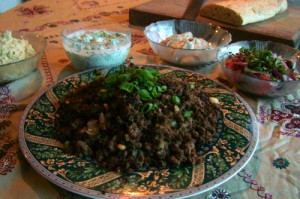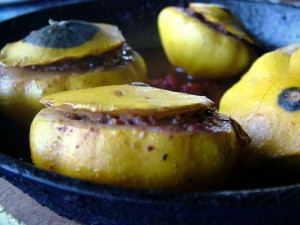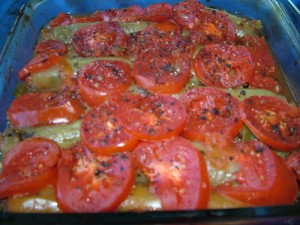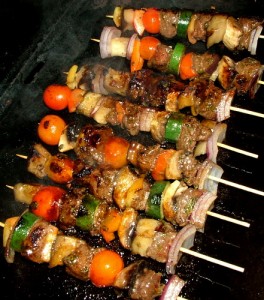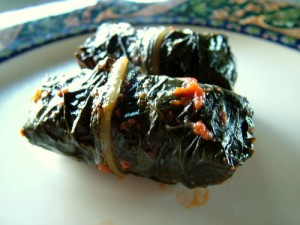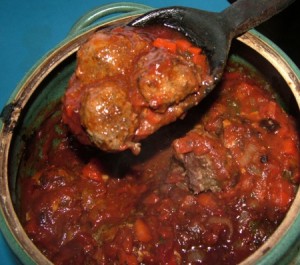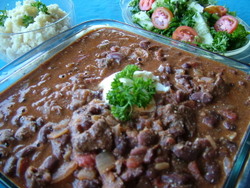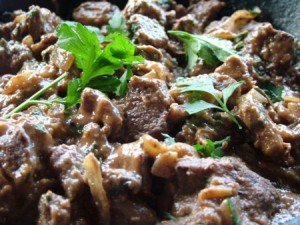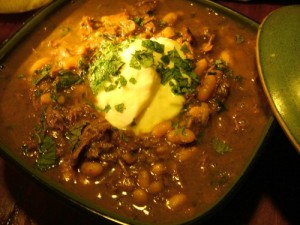Many middle-eastern recipes use goat meat, or lamb that is from breeds much less fatty than Australian lamb, and the spice profile is designed for stronger flavoured game meat. It means they often work well for kangaroo.
The kangaroo stuffed peppers were so successful that I decided to try the same stuffing with squash, which is also at the peak of its season.
Capsicums and chilis are right in season now and I’m harvesting both.
I’ve made this chutney in bulk (scaled up to 8 cups of tamarillo flesh) with roast lamb for a wedding feast. But the sweetness and acidity go really really well with kangaroo fillet, cooked on a barbeque or pan fried.
We celebrated New Year’s Eve at a barbeque with neighbours. It’s one of the things I love about living in a functioning community – socialising within walking distance. I could go on about greenhouse footprints but really it’s enough that I can drink half a bottle of red wine and wander home in the starlight wishing happy New Year to the owlet nightjar that lives on the way!
If you don’t have kale, I think the filling in this recipe will work just as well with cabbage if you reduce the water and the cooking time a little.
The recipe is elegant enough to be a celebration dinner, economical for a large group, and it can be made well ahead of time. And those of you who have visited before will know my thoughts about kangaroo as the red meat of choice.
One of the best things about Australian cuisine (besides its base in fresh produce) is its multiculturalism. We are recipe bower birds, picking up anything that is bright and shiny from other places and taking it home!
Perhaps because it was such a 1970’s dinner party recipe, stroganoff has a reputation for being difficult and time consuming to cook, and it’s not, not at all.
If you are new to kangaroo meat, this is not a bad recipe to start out with. The preserved lemon is the interesting flavour in it, and kangaroo is a great meat for a tagine because it is so lean and dense.
